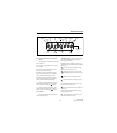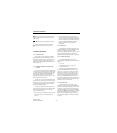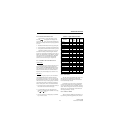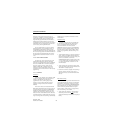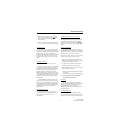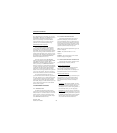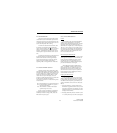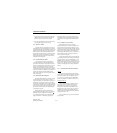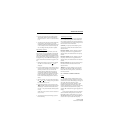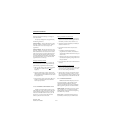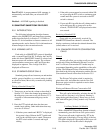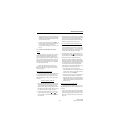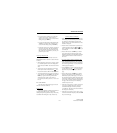
TRANSCEIVER OPERATION
2-10
November 1999
Part No. 001-7780-500
to that channel are then reassigned to all the other
channels in the current zone. The reassignments
remain in effect even after power is cycled.
3. To restore all Call Guard codes in the current zone
totheoriginalsettings,pressthe“0”key.
2.4.7 PENALTY TIMER
A penalty timer may be programmed on conven-
tional channels to prevent transmissions for a period of
time after the time-out timer described in Section 2.3.9
disables the transmitter. The penalty timer starts when
the PTT switch is released after the transmitter has
been disabled. If the PTT switch is pressed during the
penalty time, the time-out indication occurs again. A
beep sounds when the penalty timer expires and the
transmitter can then be keyed.
2.4.8 CONVERSATION TIMER
A conversation timer can be programmed on
conventional channels to limit the total length of a
conversation rather than just the length of each trans-
mission as with the time-out timer. This timer is reset
when the time between transmissions exceeds the
penalty time just described. A warning tone sounds 5
seconds before the conversation timer expires. When it
expires, the transmitter is disabled and a warning tone
sounds. The transmitter remains disabled for the
length of the penalty time, and a beep sounds when it
can be keyed again.
2.4.9 REPEATER TALK-AROUND
Normally, all transmissions go through a repeater
which usually increases range. However, if out of
range of the repeater, you cannot talk to anyone else on
that channel even though the mobile you are calling
may be only a short distance away. To allow communi-
cation when this situation occurs, repeater talk-around
can be used to transmit on the receive frequency. This
allows direct communication with a mobile without
going through a repeater.
Repeater talk-around can be selected if the
Repeater Talk-Around option switch is programmed.
When talk-around is enabled by this switch, the
icon is displayed and “RTA ON” is flashed in the
display. Then when it is disabled by pressing this
switch again, that icon is no longer displayed and
“RTA OFF” is flashed. Changing channels or turning
power off does not change the selected talk-around
mode.
2.4.10 POWER OUTPUT SELECT
If the High/Low Power option switch is
programmed and power selection is permitted on the
current channel by programming, either high or low
transmitter power can be selected. Generally, the high
power setting transmits longer distances but uses more
battery power, and the opposite occurs with the low
power setting. When the low power is selected on the
current channel, “LOW” is indicated continuously
near the bottom of the display.
Pressing the High/Low Power switch toggles the
power setting. The new level is flashed in the display
when this switch is pressed as “HI POWER” or “LO
POWER”. If power selection is not permitted on the
channel, the fixed power level is flashed and no power
change occurs. Turning power off or changing chan-
nels does not change the power setting selected for a
channel.
2.4.11 CONVENTIONAL MODE SCANNING
General
The following information describes scanning
features unique to conventional operation. Scan opera-
tion common to all modes is described in Section
2.3.11, and scan operation unique to SMARTNET/
SmartZone operation is described in Section 2.5.12.
Selecting a Scan List
When standard scanning with full keypad (15-
key) models, one of up to three scan lists can be
selected. These lists can be user programmed as
described in the information which follows. With
limited keypad (3-key) models, only one scan list is
available and is not user programmable. However,
nuisance channels can still be temporarily deleted as
described in Section 2.3.11.
Proceed as follows to select a scan list with full
keypad models:




